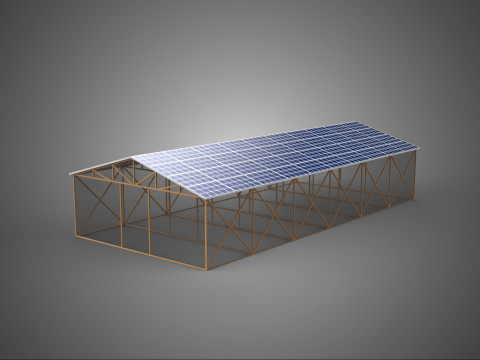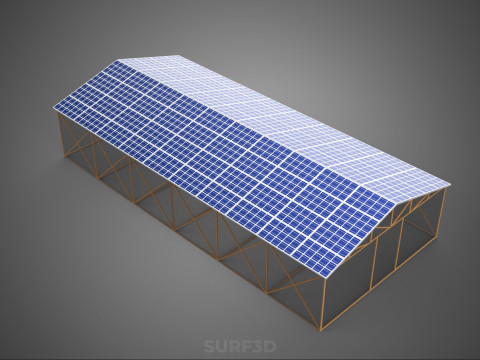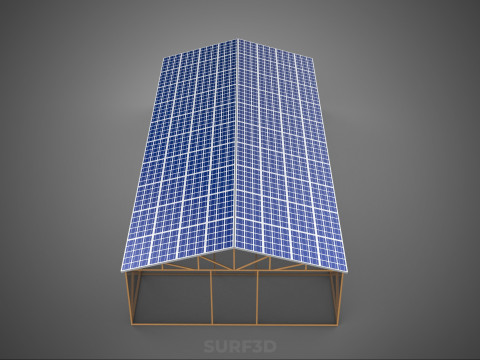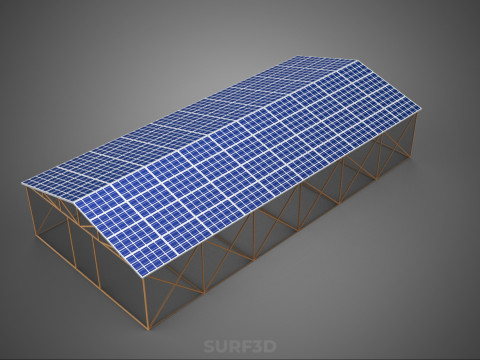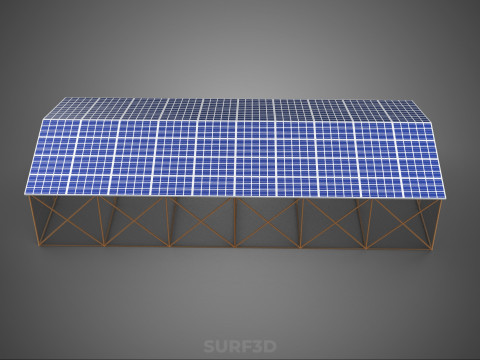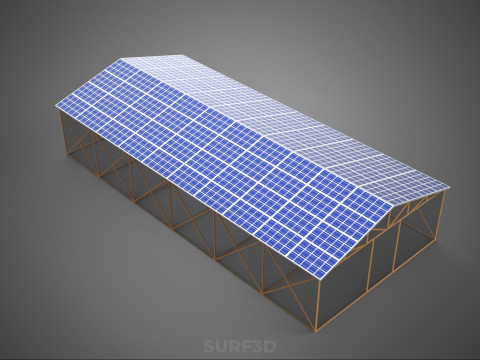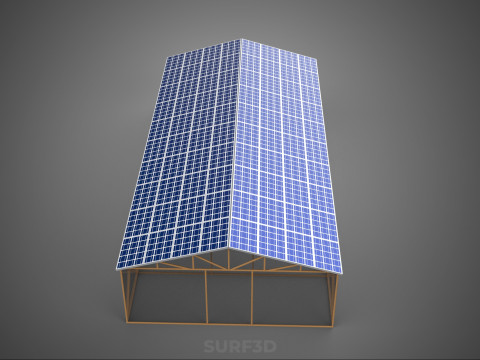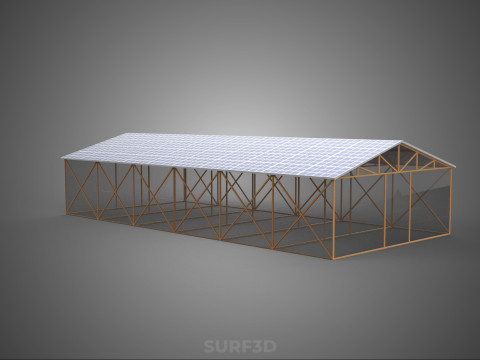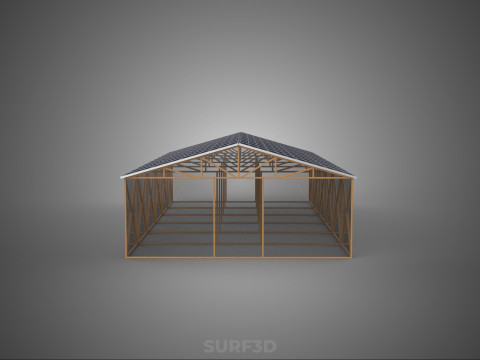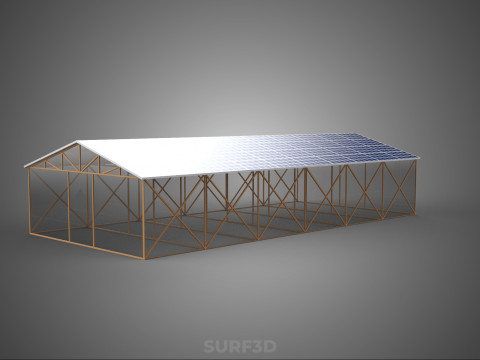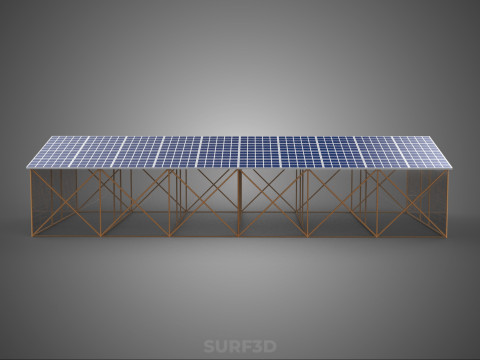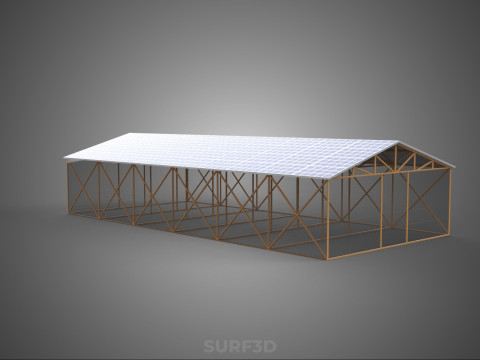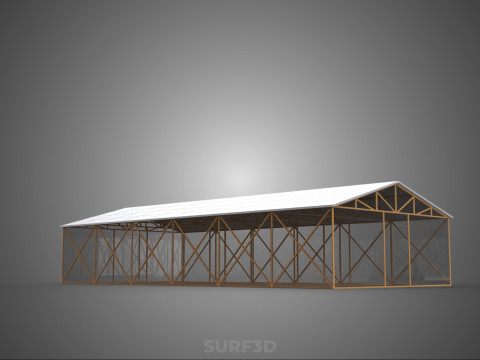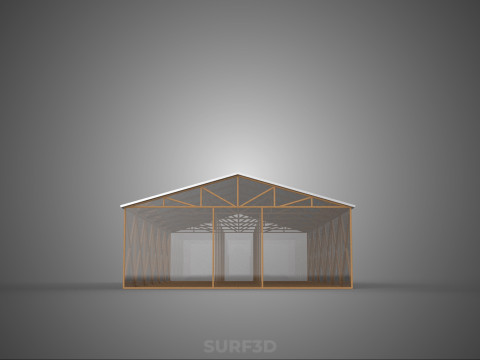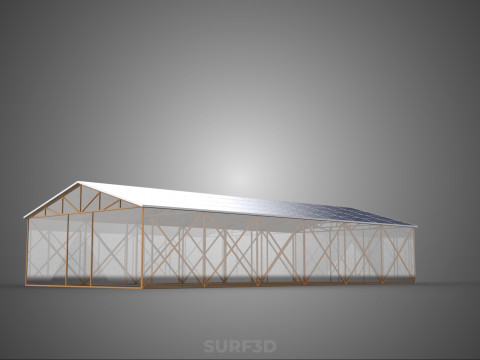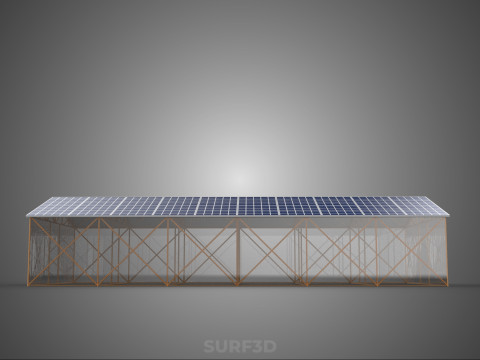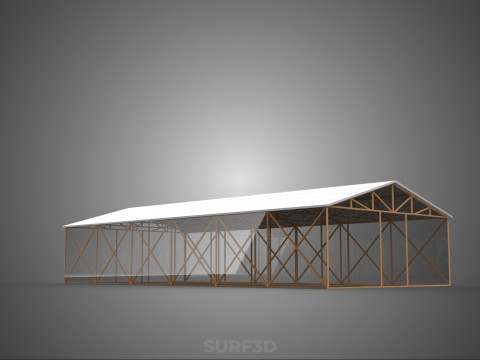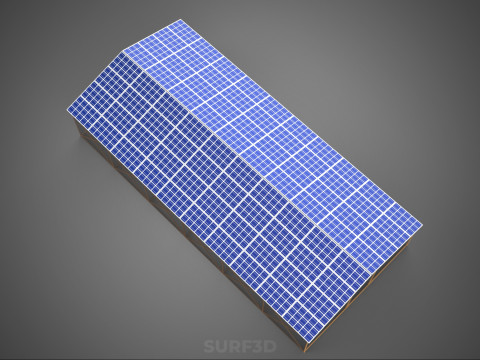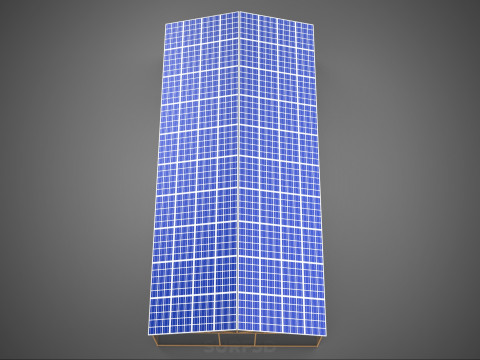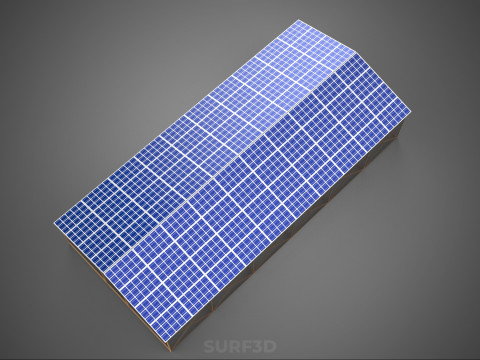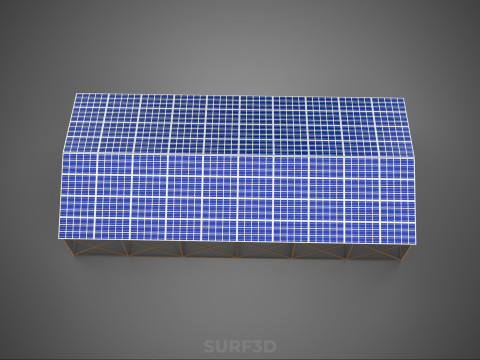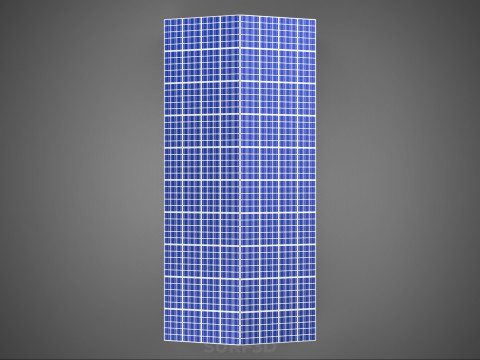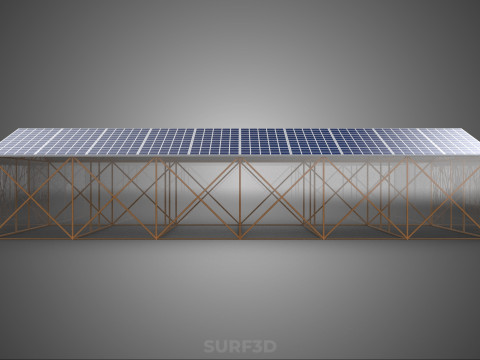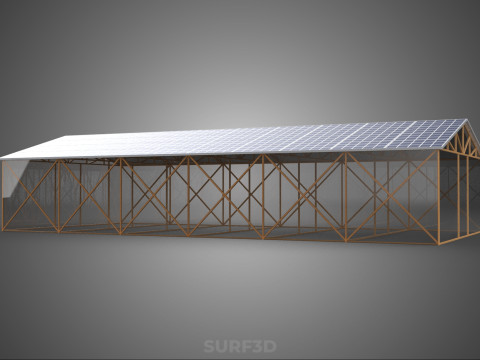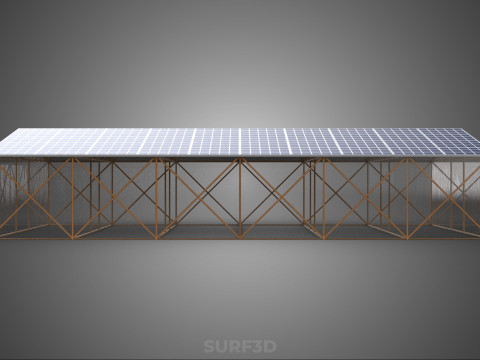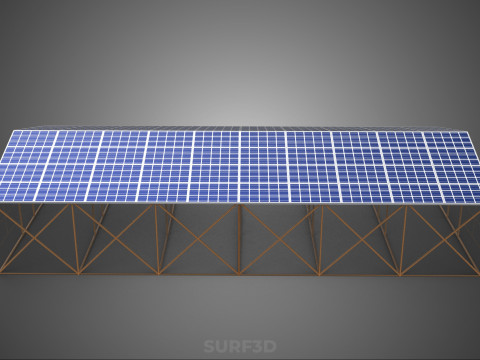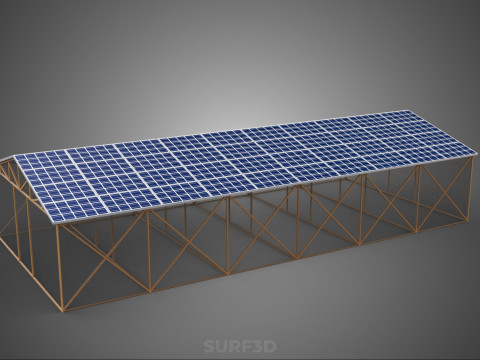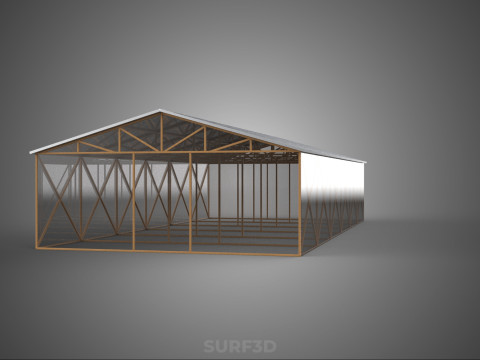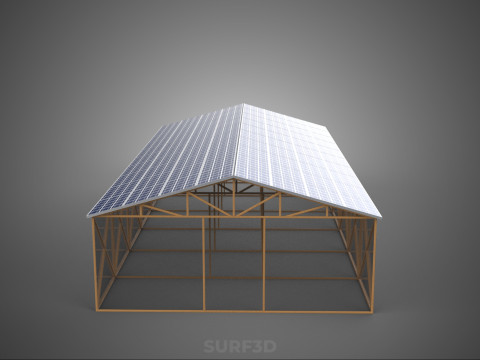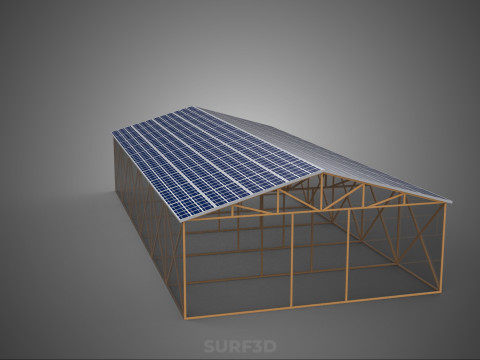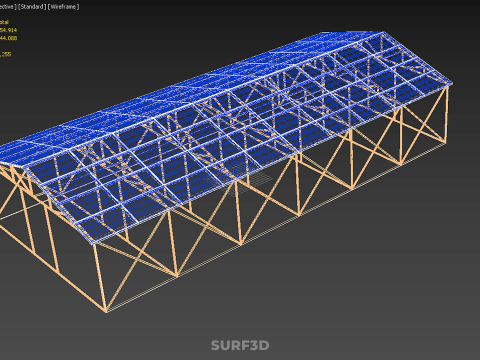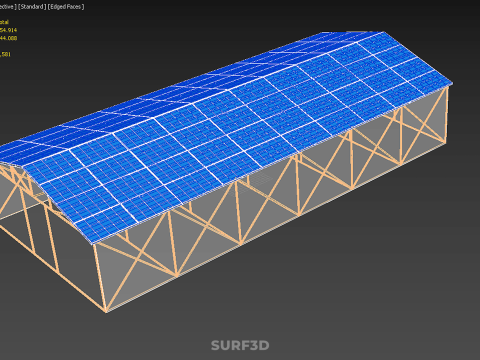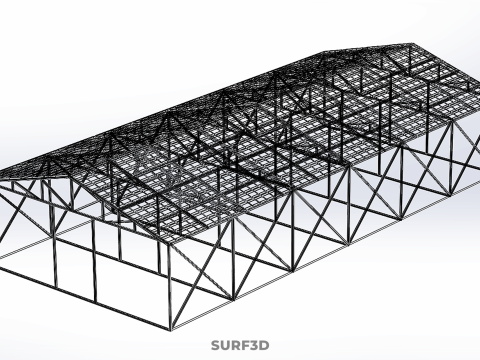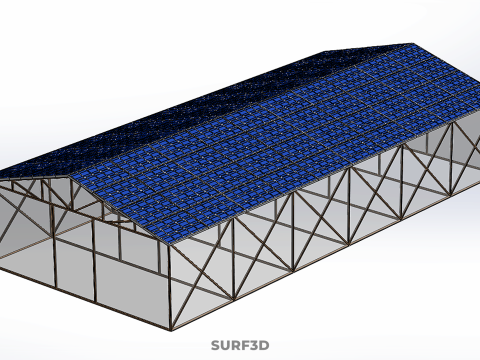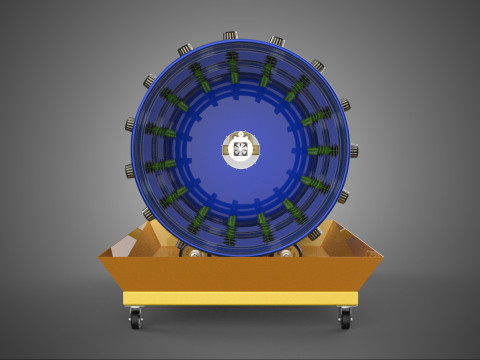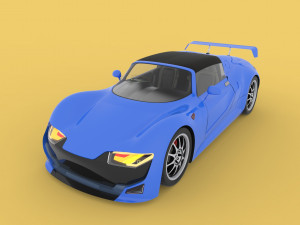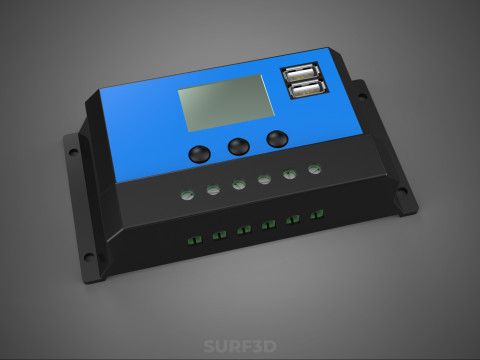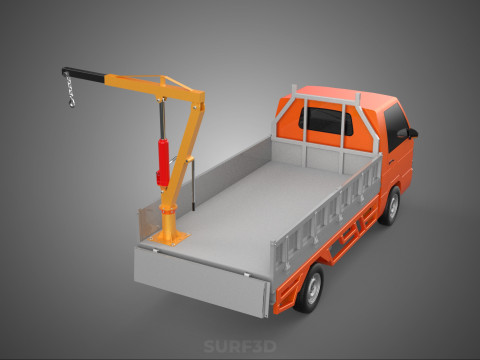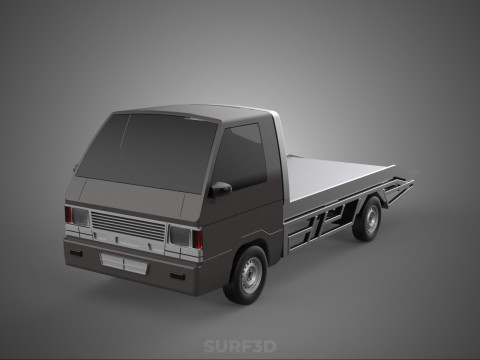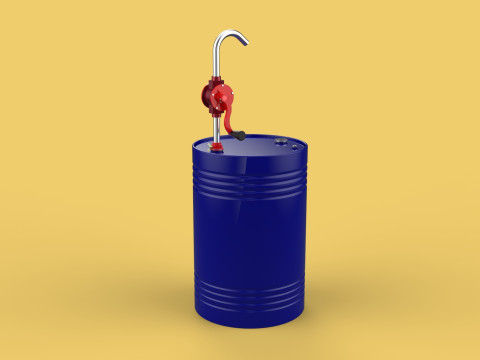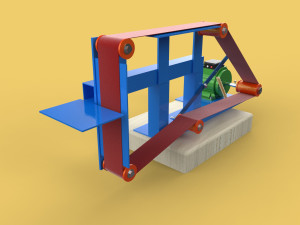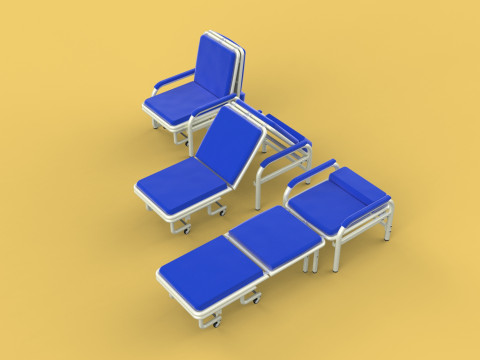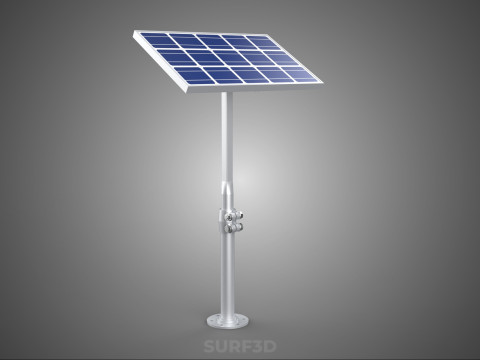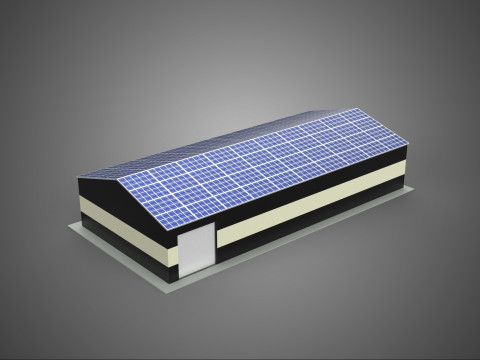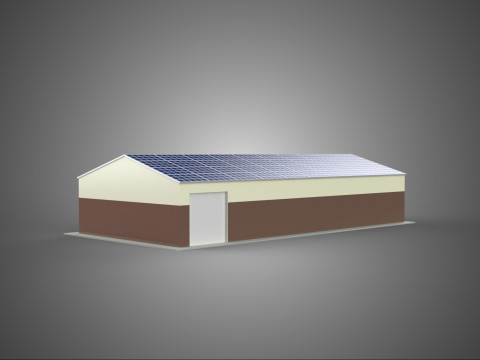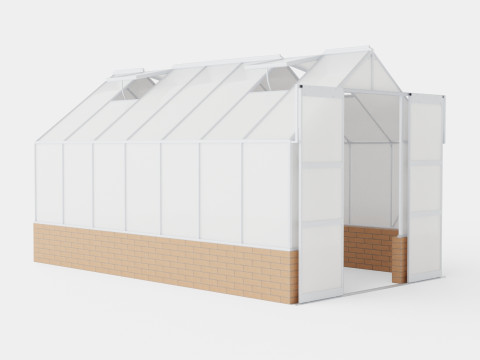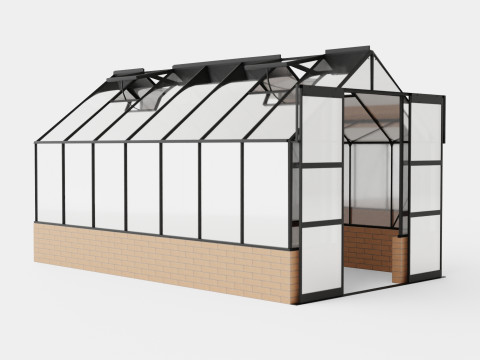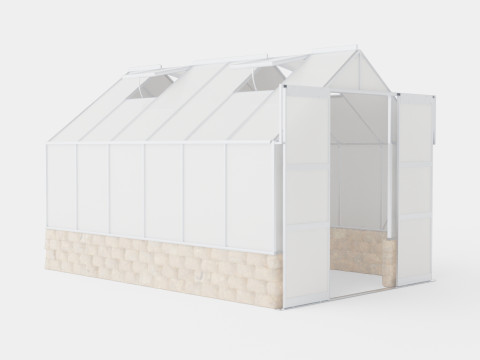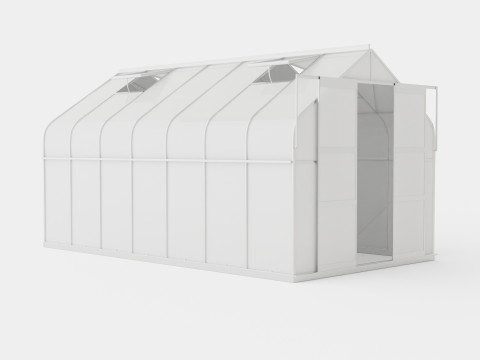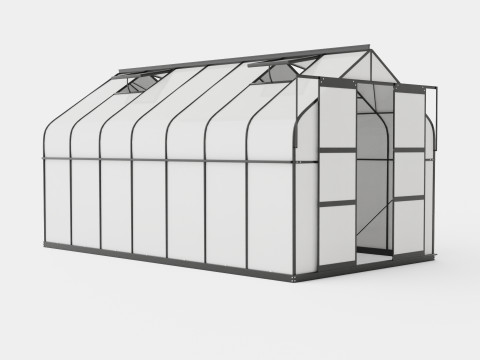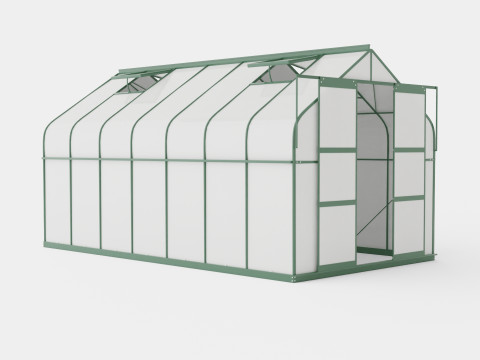PHOTOVOLTAIC SOLAR PANEL TOP ROOF GREENHOUSE HOTHOUSE GLASSHOUSE 3D 모델
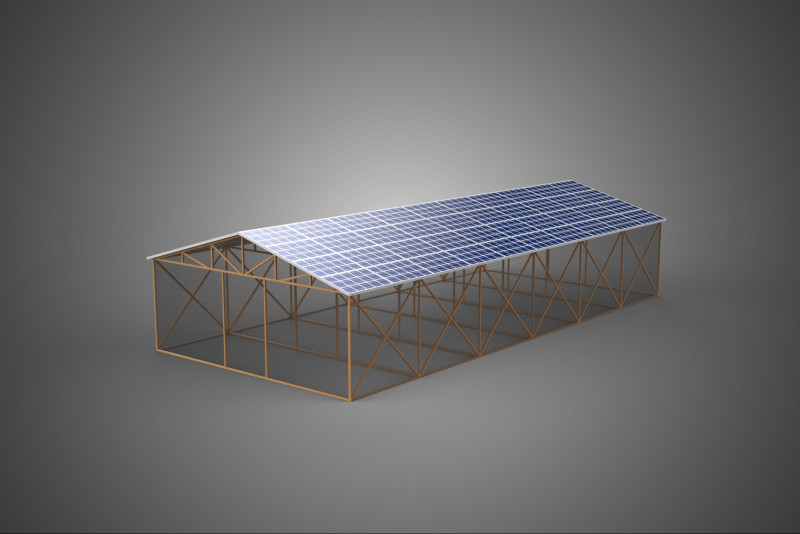
- 이용 가능한 포맷: Rhinoceros (.3dm) 5.12 MB3D Studio (.3ds) 940.96 kbBlender3D (.blend) 2.44 MBCollada (.dae) 1.35 MBAutodesk AutoCAD (.dwg) 4.65 MBAutodesk FBX (.fbx) 3.61 MBGLB (.glb / .gltf) 1.08 MBIGES (.iges) 1.45 MBAutodesk 3DS MAX (.max) 6.81 MBWavefront OBJ (.obj) 2.40 MBACIS(.sat) 11.26 MBSketchUp (.skp) 831.00 kbSTEP (.step) 1.23 MBStereolithography (.stl) 1.60 MB
- 폴리곤:254914
- 버텍스:344088
- 애니메이티드:No
- 텍스쳐드:No
- 리그드:No
- 재료:
- 로우 폴리곤:No
- 컬렉션:No
- UVW 매핑:No
- 플러그인 사용 됨:No
- 프린트 준비:No
- 3D 스캔:No
- 성인용 콘텐츠:No
- PBR:No
- AI 훈련:No
- 지오메트리:Poly NURBS
- 언래핑 된 UVs:Unknown
- 조회:32
- 날짜: 2025-10-16
- 아이템 ID:605605
High-quality 3D assets at affordable prices — trusted by designers, engineers, and creators worldwide. Made with care to be versatile, accessible, and ready for your pipeline.
Included File Formats
This model is provided in 14 widely supported formats, ensuring maximum compatibility:
• - FBX (.fbx) – Standard format for most 3D software and pipelines
• - OBJ + MTL (.obj, .mtl) – Wavefront format, widely used and compatible
• - STL (.stl) – Exported mesh geometry; may be suitable for 3D printing with adjustments
• - STEP (.step, .stp) – CAD format using NURBS surfaces
• - IGES (.iges, .igs) – Common format for CAD/CAM and engineering workflows (NURBS)
• - SAT (.sat) – ACIS solid model format (NURBS)
• - DAE (.dae) – Collada format for 3D applications and animations
• - glTF (.glb) – Modern, lightweight format for web, AR, and real-time engines
• - 3DS (.3ds) – Legacy format with broad software support
• - 3ds Max (.max) – Provided for 3ds Max users
• - Blender (.blend) – Provided for Blender users
• - SketchUp (.skp) – Compatible with all SketchUp versions
• - AutoCAD (.dwg) – Suitable for technical and architectural workflows
• - Rhino (.3dm) – Provided for Rhino users
Model Info
• - All files are checked and tested for integrity and correct content
• - Geometry uses real-world scale; model resolution varies depending on the product (high or low poly)
• • - Scene setup and mesh structure may vary depending on model complexity
• - Rendered using Luxion KeyShot
• - Affordable price with professional detailing
Buy with confidence. Quality and compatibility guaranteed.
If you have any questions about the file formats, feel free to send us a message — we're happy to assist you!
Sincerely,
SURF3D
Trusted source for professional and affordable 3D models.
More Information About 3D Model :
The integration of photovoltaic (PV) solar panels into the top roof structure of agricultural greenhouses, hothouses, or glasshouses represents a specialized field within agrivoltaics, merging renewable energy production with controlled-environment agriculture (CEA). This architectural and technological synergy aims to optimize land use, generate electricity, and manage environmental parameters critical for crop cultivation.
**Nomenclature and Definition**
The systems described herein are formally referred to as Photovoltaic Greenhouse Integrated Systems (PVGIS) or Solar Greenhouse Roof Installations. They diverge from standard ground-mounted PV arrays by replacing or integrating directly within the traditional transparent or semi-transparent roofing material of the cultivation structure.
**Design and Configuration**
The primary challenge in designing PVGIS is balancing solar energy harvesting (electricity generation) with photosynthetic active radiation (PAR) transmission required for plant growth. The panels cannot entirely occlude sunlight without severely impairing crop yields. Several design strategies are employed:
1. **Semi-Transparent Photovoltaics (STPV):** These utilize materials like amorphous silicon (a-Si) or specialized organic photovoltaic (OPV) films, which inherently allow a portion of sunlight to pass through the cell structure. The degree of transparency is adjustable based on crop light requirements (e.g., shade-tolerant vs. high-light demand crops).
2. **Spaced (Intermittent) Panels:** Conventional crystalline silicon (c-Si) panels are mounted in rows with calculated gaps ***ween them. This checkerboard or striped arrangement ensures sufficient light *********** to the crops below, while the panels themselves utilize the direct solar radiation. The spacing ratio is meticulously determined to achieve optimal light uniformity and minimize yield reduction.
3. **Spectral Filtering Photovoltaics:** Utilizing dye-sensitized solar cells (DSSC) or quantum dots (QD), these panels selectively absorb specific wavelengths of light (e.g., green and far-red light, which are less essential for peak photosynthesis) and transmit the wavelengths most beneficial for plant growth (primarily blue and red light).
**Technical and Agricultural Benefits**
**Energy Production:** The installation converts solar irradiance into electrical energy, used either to power the greenhouse's internal systems (e.g., heating, cooling, ventilation, supplementary lighting, irrigation pumps) or exported to the electrical grid, potentially generating revenue and offsetting operational costs.
**Thermal Regulation and Shading:** In hot climates, the PV roof structure provides beneficial partial shading, reducing heat load and transpiration rates within the glasshouse. This function can significantly lower the energy demand for cooling systems, acting as a dynamic or passive climate control mechanism. The panels reduce the overall diffuse radiation entering the structure, a factor that must be carefully managed.
**Land Optimization:** PVGIS represents a dual-use land strategy, maximizing productivity per unit area by stacking energy generation atop agricultural production, avoiding competition for arable land.
**Economic Viability**
The viability of PVGIS is contingent upon several factors, including: the cost premium of specialized transparent PV modules; local electricity tariffs and feed-in tariffs; capital investment costs; maintenance complexity; and the cultivated crop's sensitivity to reduced light transmission. While the initial investment is higher than traditional greenhouses, the long-term energy savings and potential electricity revenue streams often provide a favorable return on investment (ROI), particularly in regions with high solar irradiance and significant energy demand for CEA.
**Challenges and Considerations**
1. **Light Reduction Penalty:** The principal drawback is the inherent reduction in total light intensity reaching the crops. Even optimally designed systems typically reduce PAR by 10% to 50%. This necessitates careful crop selection (e.g., leafy greens, herbs, or ornamental plants that thrive under lower light conditions) or implementation of supplementary artificial lighting, which counters the energy savings goal.
2. **Structural Load:** The weight of the PV modules and mounting hardware requires a robust greenhouse structural design, increasing construction costs compared to standard glass or plastic sheeting structures.
3. **Humidity and Condensation:** Reduced solar heating and altered airflow patterns beneath the panels can affect internal microclimates, potentially increasing humidity levels and the risk of fungal diseases if ventilation systems are inadequate.
**KEYWORDS:** Agrivoltaics, Photovoltaic Greenhouse, Controlled Environment Agriculture, Renewable Energy, Semi-Transparent PV, Light Transmission, PAR, Spectral Filtering, Dual-Use Land, Energy Optimization, Solar Integration, Greenhouse Architecture, Hothouse, Glasshouse, Climate Control, Crystalline Silicon, Amorphous Silicon, Crop Yield, Microclimate, Thermal Regulation, Shading Coefficient, Feed-in Tariff, Sustainable Agriculture, Energy Efficiency, Structural Load, Photosynthesis, Agricultural Technology, ROI, Integrated System, Land Use Efficiency.
다른 포맷이 필요하시면, 새로운 지원 티켓을 열어 요청하세요. 저희는 3D 모델을 다음으로 변환할 수 있습니다: .stl, .c4d, .obj, .fbx, .ma/.mb, .3ds, .3dm, .dxf/.dwg, .max. .blend, .skp, .glb. 우리는 3D 장면을 변환하지 않습니다 .step, .iges, .stp, .sldprt와 같은 형식도 포함됩니다.!


 English
English Español
Español Deutsch
Deutsch 日本語
日本語 Polska
Polska Français
Français 中國
中國 한국의
한국의 Українська
Українська Italiano
Italiano Nederlands
Nederlands Türkçe
Türkçe Português
Português Bahasa Indonesia
Bahasa Indonesia Русский
Русский हिंदी
हिंदी